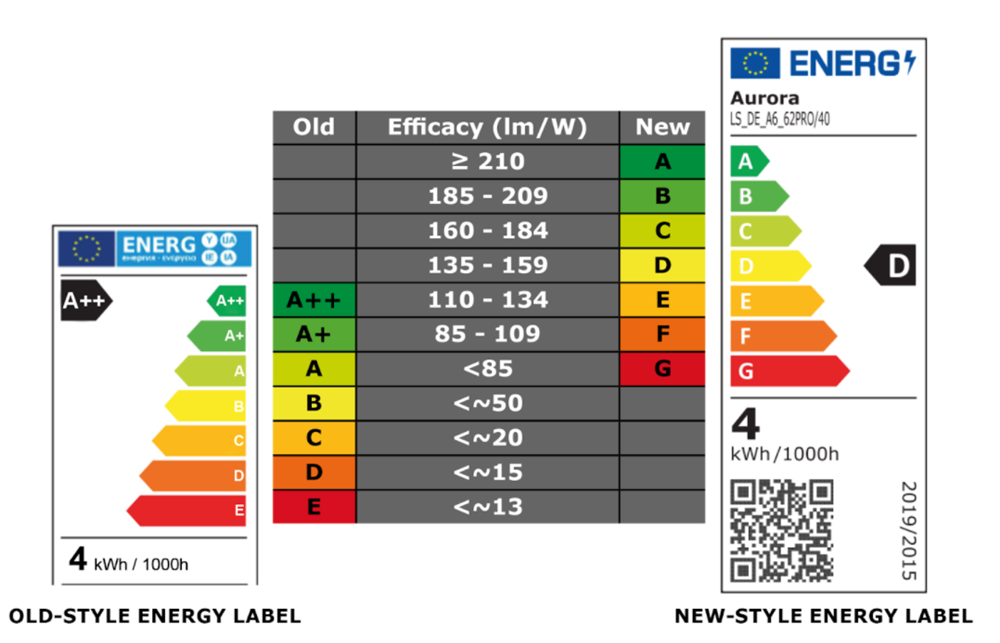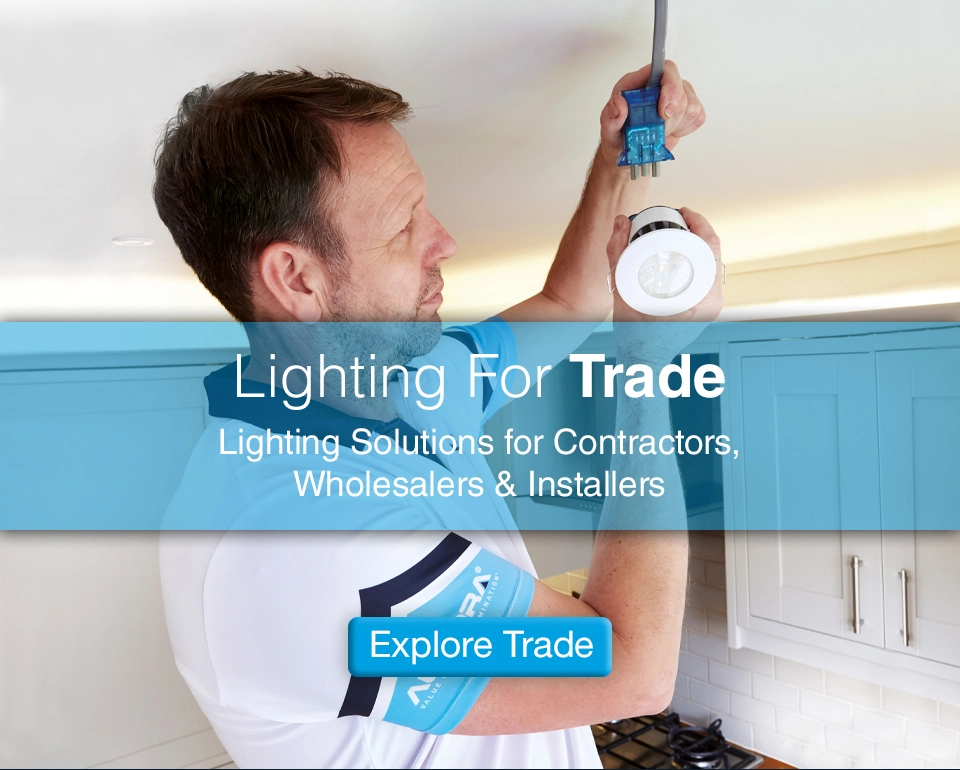On 1st September 2021 a switch was flicked across all lighting products. That switch was ErP, a change that will drive innovation in energy efficiency for luminaires in all industries, but also one that has meant significant change for manufacturers and distributors. And change often brings fresh headaches. There are new systems to learn, new marketing documents to create, and plenty of technical skeletons that need cleaning from closets.
Industry Upheaval
For many, the biggest headache that has already appeared is the change in energy rating. Many electrical devices that were previously A+ or A++ under the old system are now rated G or F. These products were previously some of the highest ratings, and are now the lowest without any performance change. Some have even been improved to be more efficient and still only scrape a G rating under the new A-G efficiency scale. The main reason is that the advances in LED energy efficiency have meant that more than 90% of products achieved an A+ rating or higher with the old system, meaning most products appeared energy-efficient even if they were poorly performing compared to the latest technologies.
The reality of the new situation is that customers are questioning why products have significantly worse ratings than before. Have they been misled and their previous purchases were actually inefficient? Is this another case of the VW car emissions scandal? Maybe these products have had cost cutting measures applied and so now they’re poorer performers. None of this is the case, of course, but in the absence of better information they’re all reasonable conclusions.
So what is the true effect of ErP?
The Big Changes
The new European ErP lighting regulations are known officially as the Regulation for ecodesign requirements for light sources and separate control gears (EU) 2019/2020 and Regulation on energy labelling for light sources (EU) 2019/2015). As of 1st September 2021, they have brought about some significant changes to the requirements for light sources. The UK equivalent of these changes followed one month later, and helpfully the UK law has been designed to match the EU regulations to allow products in the UK and EU to share the same specification. The main points of the new rules are:
A change from the A++ to E scale, to an A to G scale. In simple terms, to achieve an A rating a product now needs to be 210lm/W or higher, when previously they only needed roughly 50-85lm/W. That’s a huge increase. By comparison, a rating of 85lm/W would now achieve a G rating under most circumstances.

Image 1: A comparison of the labels of the same product before and after the regulatory change, with no technical changes at all, featuring an A++ rating under the old system, and a D rating under the new system.
- A reduction in the allowed stand-by power, should not exceed 0.5W
- Light sources must now be registered on the European EPREL database for products shipping to the EU. If they are being sold in the UK, the manufacturer needs to make sure there is a free-use website to link to the label QR code.
- To enable a circular economy approach to lighting, products must be capable of being disassembled with normal tools. In this way, electricians and skilled technicians can repair luminaires, thereby reducing avoidable electronics waste
- Tolerances have been tightened across all of this information, and should only be applied by the relevant market surveillance authority. This means the tolerances shouldn’t be used by the manufacturer to justify a product’s performance.
When Are These Changes Taking Effect?
The rules apply to everything made or sold by a manufacturer after 1st September 2021 for the EU, and the 1st October 2021 for the UK. Existing stock in shops may be sold until 1st March 2023 (EU) or 1st April 2023 (UK), though this only applies to retailers (e.g. wholesalers, points-of-sale, online sellers) and not to manufacturers that hold old-labelled stock. If a manufacturer wishes to sell stock with the old label, they must cover that label with a sticker bearing the new label.
Other Important Information
The other significant changes relate to the definitions of parts of luminaires. For example, a light source is now clearly defined as “an electrically operated product intended to emit, or, in the case of a non-incandescent light source, intended to be possibly tuned to emit, light, or both” with certain specific characteristics. The specific characteristics are those we would use to define most normal, non-emergency commercial or residential lighting with white spectra on or close to the black body locus. This would then exclude, for example, horticultural lighting.
Where Do We Need to Display the New Energy Label?
This is a key question that trips up some sellers. The labelling regulation has enforced stricter measures for the information that needs to be shown, and the locations where manufacturers and retailers need to display it. Specifically, in the following locations:
- Point-of-sale packaging (i.e. not bulk shipping boxes)
- Distance-selling (e.g. online)
- Visual advertisements for a specific model
- Technical promotional material for a specific model
In these locations, the energy class needs to be displayed at a minimum, and it’s worth reading the regulations to check exactly what you need to include.
Summary
- EU: As of 1st September 2021, all products must have the new label in the EU
- UK: As of 1st October 2021, all products must have the new label in the UK
- EU: Shops have until 1st March 2023 to sell existing stock with the old label in the EU
- UK: Shops have until 1st April 2023 to sell existing stock with the old label in the UK
- There’s a new energy label with new scaling
- There are new product requirements at the design phase
- There are new packaging and information display requirements
For further reading, the regulations themselves can be found here:
The old, repealed regulations can be found here:
More information can be found directly from the EU and UK websites:


















